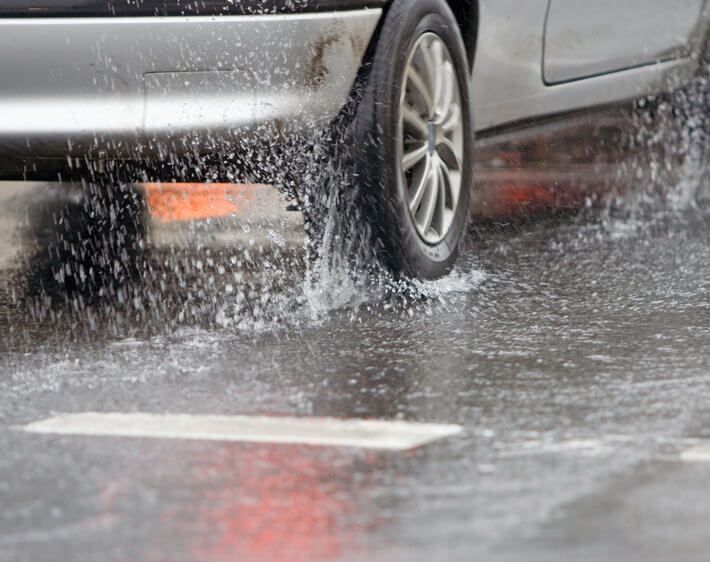You’re driving along on a rainy day, just trying to get where you’re going. You adjust your steering wheel to change lanes, and all of a sudden, the back of your car starts to skid. Gasp!
Your heart starts to race. Within an instant, you think, “What if I hit another car? What if another car hits me?” In that moment, regaining control over your car and stopping the fishtail skidding is vital to your safety. Learn what causes this type of skidding, what to do if your car fishtails, and how to avoid it in the first place.
What Causes Fishtailing in a Car
When your rear tires lose traction—or grip—on the road, your car begins to slide on the road’s surface rather than move in the direction you’re steering. This is “fishtailing," which is also called acceleration skidding or over-steering.
Fishtailing happens most often on slick, icy, or snowy roads, but it’s also likely in heavy rain when the road begins to flood. It doesn’t just happen when making a turn, either. Your car can easily start skidding if you’re driving too fast in less-than-ideal road conditions.
If Your Car Starts to Fishtail
When the rear of your car starts skidding on the road, remember these simple strategies to stop fishtailing:
Don’t panic.
As scary as it is when your car starts to slide in a direction you don’t want to go, it’s important to remain calm. Give yourself the best chance you can to handle the situation effectively and keep yourself, your passengers, and other drivers safe.
Turn the steering wheel in the direction of the skid.
As soon as you feel your rear wheels skidding, begin turning the steering wheel in the same direction that the rear wheels are moving. So, if the back end of the car is sliding toward the driver’s side, turn the steering wheel to the left. The rear is skidding toward the passenger side? Steer right. This will help your wheels turn back to the direction you want to travel and help you regain control of your vehicle.
Take your foot off the gas and gently brake.
When you lose control of your car, your first gut reaction may be to slam on the brakes to stop your vehicle from moving. Resist this urge. Instead, take your foot off of the accelerator and pump your brakes if they're standard. If you have anti-lock brakes (ABS) apply steady pressure instead of pumping, advises the Missouri Department of Transportation.
How to Avoid Fishtailing & Acceleration Skidding
Of course, the best way to keep yourself and your passengers safe is to avoid fishtailing in the first place.
- Reduce your speed when roads are slippery from ice, snow, or heavy rain.
- Add distance between your car and the driver in front of you to prevent sudden braking when you’re in traffic.
- Slow down more than you normally would when approaching and making a turn.
- Replace old, worn-out tires. They simply can't grip the road well and their lack of traction could lead to dangerous fishtailing when you’re driving in rain or other slippery conditions.
Your tires play a huge role in the safety of your vehicle, especially in slick road conditions. Make sure you’re driving on tires that are seasonally appropriate for your area. In some regions, this means investing in all-season tires. In others—like the Rocky Mountains and other areas that see snow later into the year—it means leaving your winter tires on a bit longer.
Not sure if you’re driving on the best tires for your specific needs? Don’t risk your safety on the road. At Firestone Complete Auto Care, our technicians can make sure your vehicle's tires are ready to take you where you need to go, whether you’re driving through lingering snow or spring rain showers. Visit your nearest Firestone Complete Auto Care today to speak with a tire expert today!



